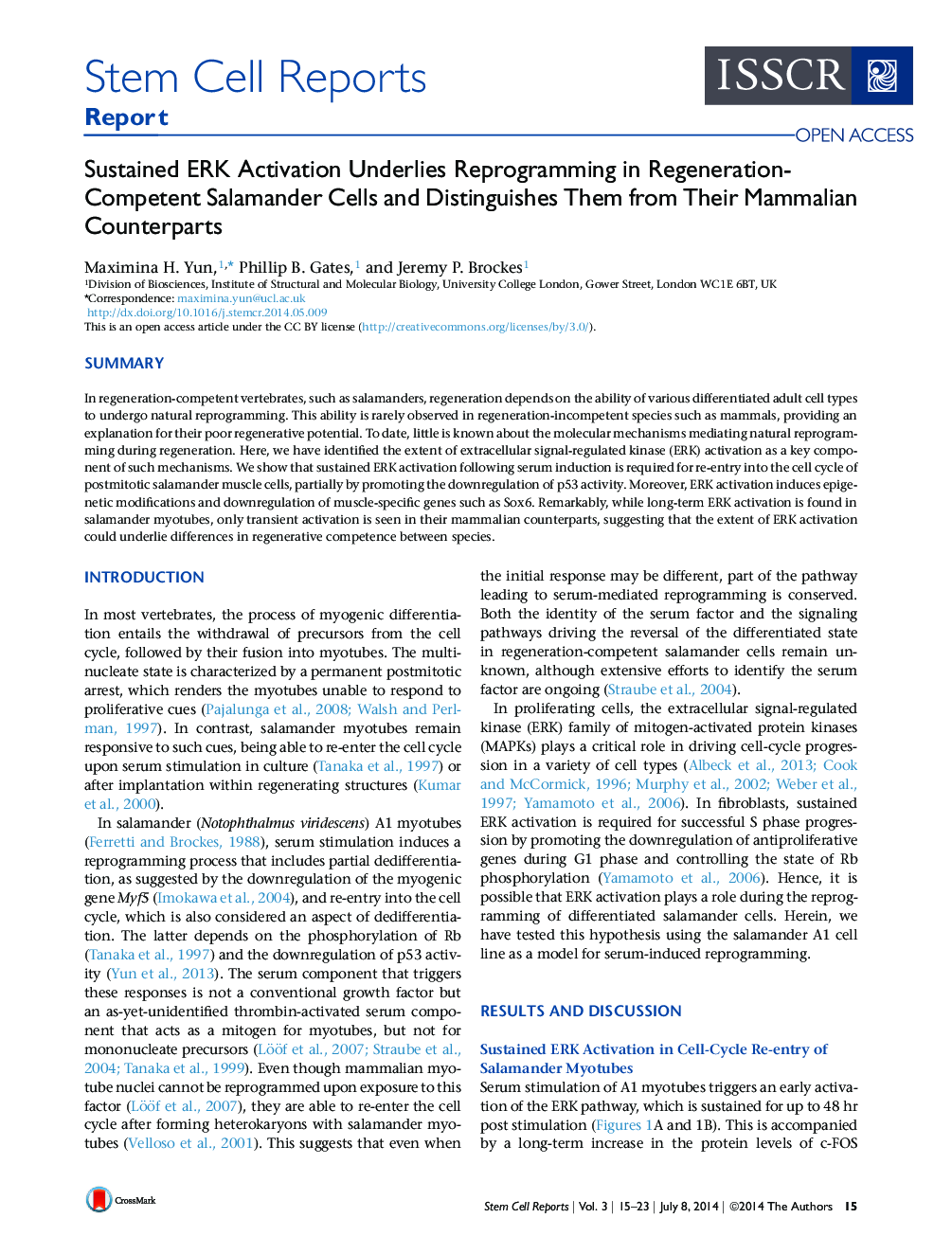| Article ID | Journal | Published Year | Pages | File Type |
|---|---|---|---|---|
| 2093377 | Stem Cell Reports | 2014 | 9 Pages |
•Sustained ERK activation is required for serum reprogramming of salamander cells•Only transient ERK activation is observed in their mammalian counterparts•Constant ERK activation promotes expression of S phase genes in mammalian myotubes•The extent of ERK activation could underlie differences in regenerative competence
SummaryIn regeneration-competent vertebrates, such as salamanders, regeneration depends on the ability of various differentiated adult cell types to undergo natural reprogramming. This ability is rarely observed in regeneration-incompetent species such as mammals, providing an explanation for their poor regenerative potential. To date, little is known about the molecular mechanisms mediating natural reprogramming during regeneration. Here, we have identified the extent of extracellular signal-regulated kinase (ERK) activation as a key component of such mechanisms. We show that sustained ERK activation following serum induction is required for re-entry into the cell cycle of postmitotic salamander muscle cells, partially by promoting the downregulation of p53 activity. Moreover, ERK activation induces epigenetic modifications and downregulation of muscle-specific genes such as Sox6. Remarkably, while long-term ERK activation is found in salamander myotubes, only transient activation is seen in their mammalian counterparts, suggesting that the extent of ERK activation could underlie differences in regenerative competence between species.
Graphical AbstractFigure optionsDownload full-size imageDownload as PowerPoint slide
